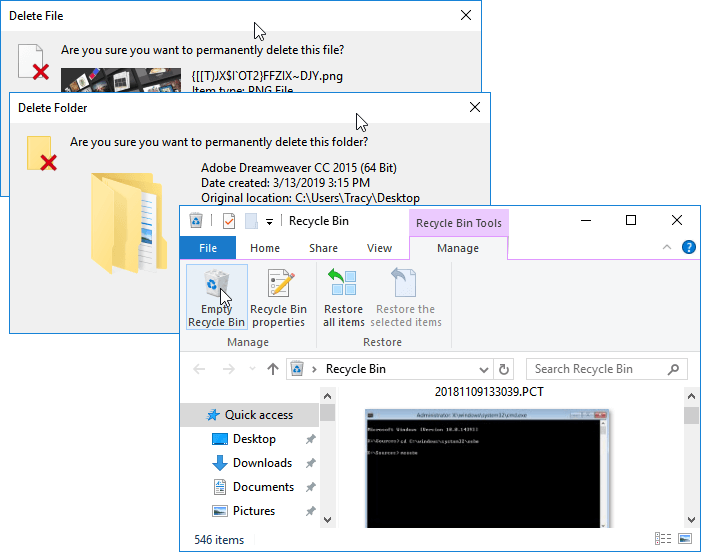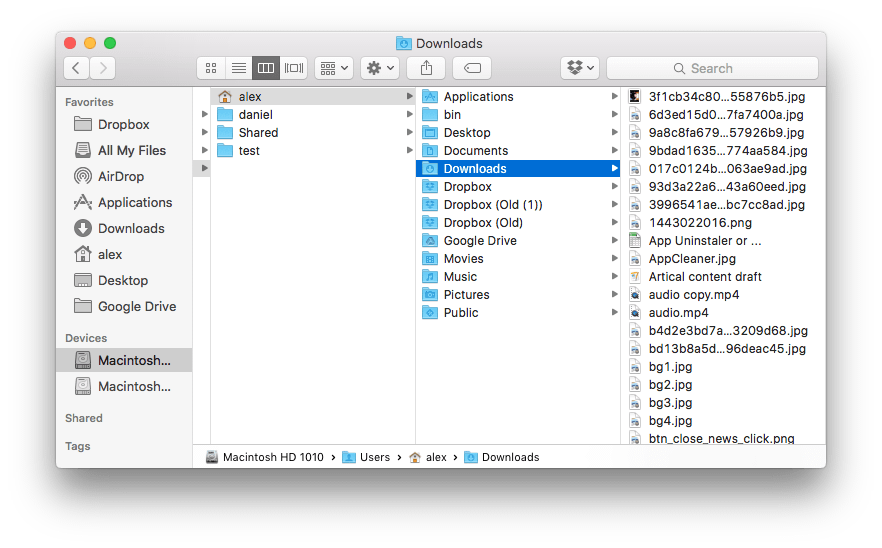How to Delete Apps in the Finder on Mac Manually (the Hard Way) Unlike Windows computers, Mac. Make Sure the File was Actually Deleted. While your first instinct may be to panic when you think.
how to delete a download on Mac, deleting downloads on Mac, how to delete download files on Mac, how do I delete a download on my Mac,
Pro tools free mac os x download. The Pro Tools Torrent is the software that is used by the singers, artists, or the producers for making sounds. This software provides you 48 stereo different tracks at the same time.
Mac Tips & Issue Fixes
Mac Related Tips
Mac Problems & Fixes
Mac Clean Tips
Apple Mac has a very friendly and clean interface, and it runs smoothly and fast. In everyday use, we may have downloaded kinds of applications, pictures, and some confidential files on our Mac hard drive. There is a Downloads folder that contains all your download files that take up space and can also leak your privacy. In this post, we will show you two ways to remove downloads and download history in browsers from your Mac to free up more space.
Also Read: How to Optimize Your Mac in 3 Methods >
How To Undo Deleting Download Folder Mac Os
Part 1. How to Delete Downloads and Download History on Mac with MacClean
Deleting Downloads File
MacClean is a new and smart cleaning program for all Macs, and it allows you to clear Internet junks like download history, browsing history, cookies, caches, and sessions from Safari, Chrome, Firefox, and Opera. It also manages to remove downloads from Mac in one click. Download MacClean and Have a Free Trial Now >
How to Delete Downloads on Mac with MacClean:
How To Undo Deleting Download Folder Mac 10
Step 1. Run MacClean, and select Cleanup Tools from the left side list.
Step 2. Choose Large & Old Files from the utilities, and choose Downloads to start scan.
Step 3. Now you will see all downloads in the Downloads folder, and you can select the download files you want to delete with the File Type and File Size filter. You can also remove all downloads from Mac by selecting all files and clicking the Clean button.
How to Deleted Downloads on a Mac-2
Can’t Miss: How to Easily Delete Temporary Files on Mac >
How to Delete Download History on Mac with MacClean:
Step 1. Run MacClean and choose Internet Junk. Select a browser with download history or junk files you want to clear. Click Scan.
Step 2. After the scan is over, choose the browser you need to find the download history.
Step 3. Select all download history and back to the last page. Click Clean to clear download history from Mac.
Delete Download History on Mac with MacClean-2
Part 2. How to Delete Downloads on Mac Directly
- Go to the Finder from the dock and click on it.
- After entering the manage page, Find Downloads on the left list.
- Click on it, it shows all downloads on the right pane.
- You can select all of your downloads by pressing Command + A, or you can choose one download at a time. Then right click the mouse and click on “Move to Trash”.
- Empty your Trash on Mac.
The Bottom Line
MacClean is aimed to clear out space and private, to let you enjoy your life with more freedom. If you still have any questions about MacClean or meet any problem when using MacClean, please leave your message on the comment part. If you like this guide, don’t forget to share it with your friends.
Deleting Folders In Windows Explorer
Product-related questions? Contact Our Support Team to Get Quick Solution >
Summary: This blog describes a few ways to remove Mac leftover files from the Mac start-up disk.
1. Clean up Mac Leftover Files through Manual Process
2. Automate Clean-up Task through a Clean Up Software
Download the 30-day free clean-up software for Mac to remove your leftovers and junk files.
Uninstalling applications from Mac is quite common and relatively straightforward. macOS has built-in functionality to uninstall an app. But, often, the uninstallation leaves behind traces of programs in the form of preference files, support documents, log files, etc. The app creates these files during usage, but they aren’t removed automatically from your Mac when you uninstall it.


Such files are known as “application leftovers.” And though they don’t harm the system in any way, they do eat up storage space and eventually contribute to slowing your Mac down.
Mac device users can officially download macOS 10.12.3 Update online by simply navigate to App Store Software Update option. To perform manual offline installation of macOS 10.12.3 (16D32) without App Store, users can download.DMG or.PKG update files available below, and can clean install macOS 10.12.3 with iTunes for free. How to Offline Install macOS 10.12.5 Without App Store? To free download and install macOS 10.12.5 Update automatically, then you can navigate to App Store Software Update option. MacOS-powered device users can also download macOS 10.12.5 without app store and can manual clean install with iTunes after downloading.DMG or.PKG update files via following direct links. Macos sierra installer download without app store. On September 20, 2016, Apple announced that macOS Sierra, the latest major release of the world’s most advanced desktop operating system, is now available as a free update. MacOS Sierra brings Siri to the Mac with intelligent and helpful features users know and love from the iPhone and iPad, along with all-new capabilities designed specifically for use on the desktop.
When you free up Mac storage space to optimize system performance, removing or deleting such leftovers is also essential. Here are a few ways by which you can quickly clean up Mac leftovers files.
1. Clean Up Mac Leftover Files through Manual Process
You can uninstall an application on Mac through a simple drag-and-drop to Trash. Though trashing works for most programs, some applications include uninstallers to uninstall them.
To find and remove Mac leftover files after you uninstall an app, do the following:
- Go to the /Home/Library/Preferences/ folder, find leftover preference files of apps that you’ve already uninstalled, and delete them manually.
- Go to the /Home/Library/Applications Support/ folder, find any folders and components of removed apps, and delete them. Delete leftover Application Support folders too.
- Go to the /Library/StartupItems/ and /Home/Library/StartupItems/ folders one at a time, look for leftover start-up items, and remove them.
- Go to System Preferences > Accounts > Login Items and find the item in the list for the application you want to remove. Then click on the “–” button to delete it from the list.
- One by one, go to the /Library/LaunchAgents/ and /Library/LaunchDaemons/ and /Home/Library/LaunchAgents/ folders, look for leftover start-up daemons or agents, and delete them.
- Go to the/Library/Receipts/ folder, find any files that have .pkg extension, and delete them. These files are used by macOS to determine installed apps.
- To find and remove any other leftover files, conduct a Finder search using the application name or the developer name as the search term. Delete any resultant files that you find.
2. Automate Clean-Up Task through a Clean Up Software
If the above manual method seems tedious, you can use a third-party Mac cleaner software to remove all application leftovers with a click of a button. Steps are as follows:
Step1: Download & install the *trial version of Speedup Mac on your MacBook, iMac, or Mac mini.
Step 2: Launch the software and select Macintosh HD from the left pane.
Step 3: Press the Scan button to initiate the scanning process on the selected drive.
Step 4: Check the total size of Mac storage space occupied by the leftover files.
Step5: Click the “SpeedUpNow” button to remove leftovers and other unwanted Mac files.
Step 6: Let the software perform the cleaning task on the Mac storage drive.
Step 7: Click OK on the “Process Completed” dialog box.
*The trial version of SpeedUp Mac software is free for 30 days. If you wish to continue using the software beyond the trial period, activate it for a nominal annual charge.
Conclusion
Download macos high sierra without a macbook. However, High Sierra Installer automatically do this for you by installing most drivers automatically, and High Sierra Installer also installs the Bootloader for you, but you may have to install additional drivers manually in case High Sierra Installer could not install the driver for you. Couldn't find an official source for an installer/download of supported Mac OS versions. Everything I found goes to the App Store which prompts for an Apple ID. How do I download Mac OS Sierra or High Sierra without an Apple ID? duplicate Ask Question. Can't download High Sierra from the Mac. In essence, High Sierra took what was good with Sierra and developed it into a more comprehensive software. High Sierra emphasizes the already-existing benefits of MacOS previous system, Sierra. There are few bells and whistles, but the changes are noticeable and positive. The Apple file system is the most significant feature it brought.
Getting rid of Mac leftover files is essential if you wish to have ample free space on your SSD or hard drive. And, SpeedUp Macserves the purpose well. The software is secure and reliable and comes in handy when you need to clean your Mac drive free from the data that isn’t required by macOS. Plus, the tool frees up drive space to help improve data access speed and overall system performance. You can even automate the clean-up task at a scheduled time using the software.